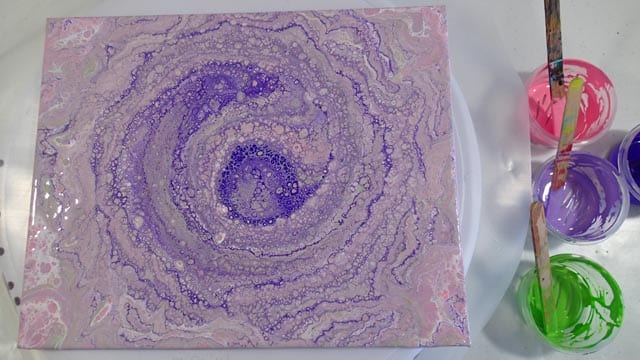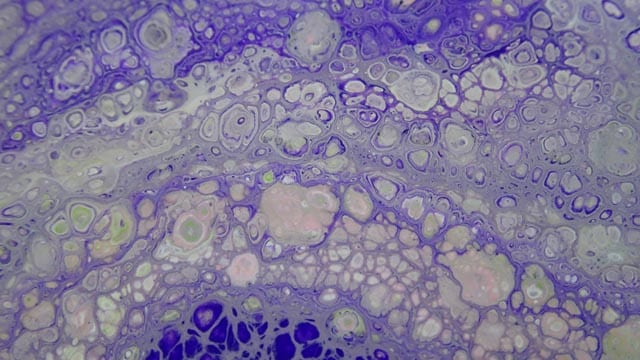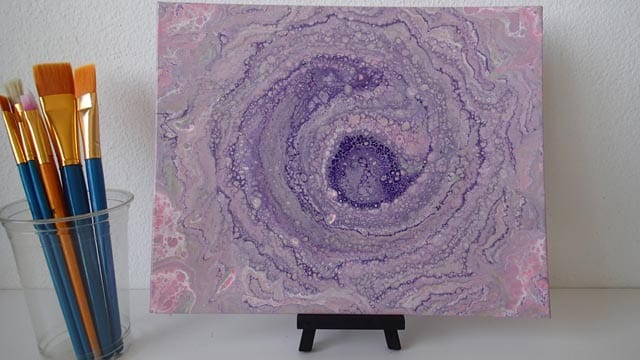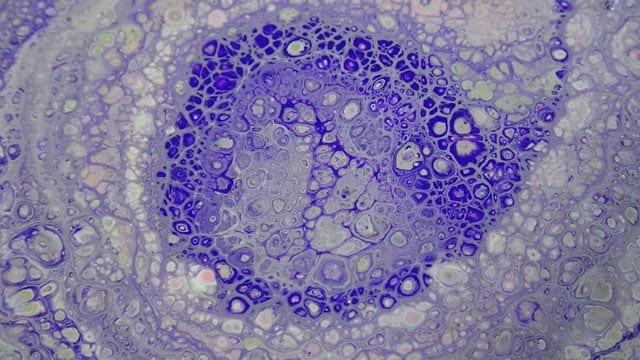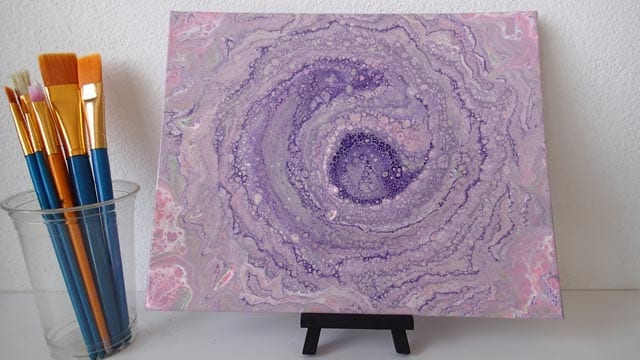I had quite a bit of those pastel-colored paints left over from the spiral record pour yesterday and I don’t like to waste anything so I changed up the mix just a little bit and used it for another spinning project.
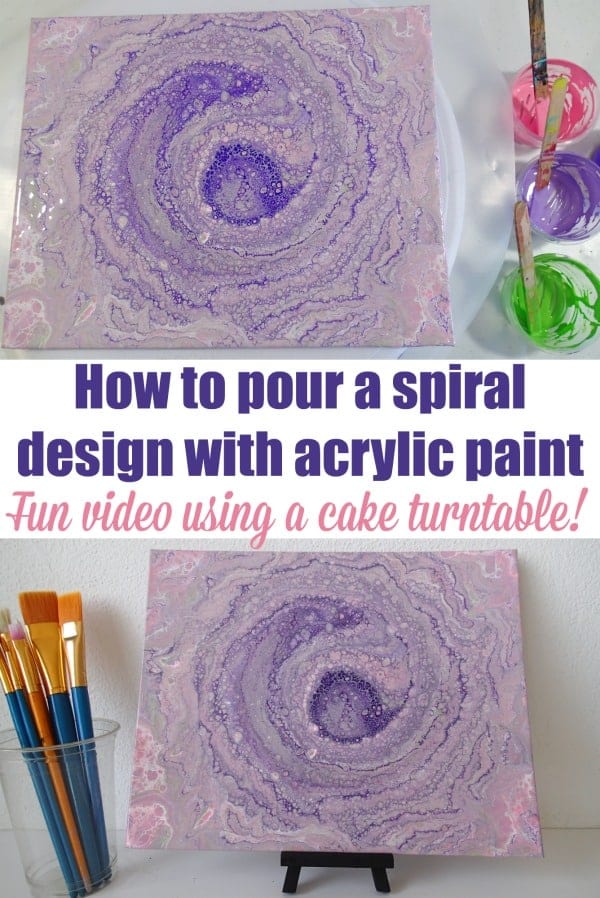
In the past, I’ve always spun projects that are either round, like a record, or square like a tile. How would it work out to spin something rectangular? Would it look odd? How would I cover the corners?
And perhaps most importantly for me, would spinning a canvas panel remove much of the paint so that the panel didn’t get so wet and didn’t warp so much. Let’s find out!
Although it’s not really my sort of palette, I think it’s nice and all the little cells are pretty. I’m sure someone who likes lilac or purple with think this is beautiful. It would look nice in a girl’s room. And it certainly made a difference in terms of the warping. The corners came up a little bit as it dried, but I’m pretty sure that spinning it vigorously removed more paint than just tilting and the canvas panel stayed flat as a result.
Check out the slideshow below for pictures, both wet and dry, and some close-ups of the details.
After being told in high school that she was so bad at art that she should switch to another subject, Deby didn’t paint again for 35 years. Then a stroke released a new wave of creativity and she began exploring with dot painting, abstract and eventually acrylic pouring, and at last the joy of working with color returned. You don’t need ‘talent’ to be an acrylic pouring artist – just enthusiasm, some basic instruction, and a willingness to try, fail and try again. Paint along with her and learn from her many mistakes, and you’ll soon make great art together.

